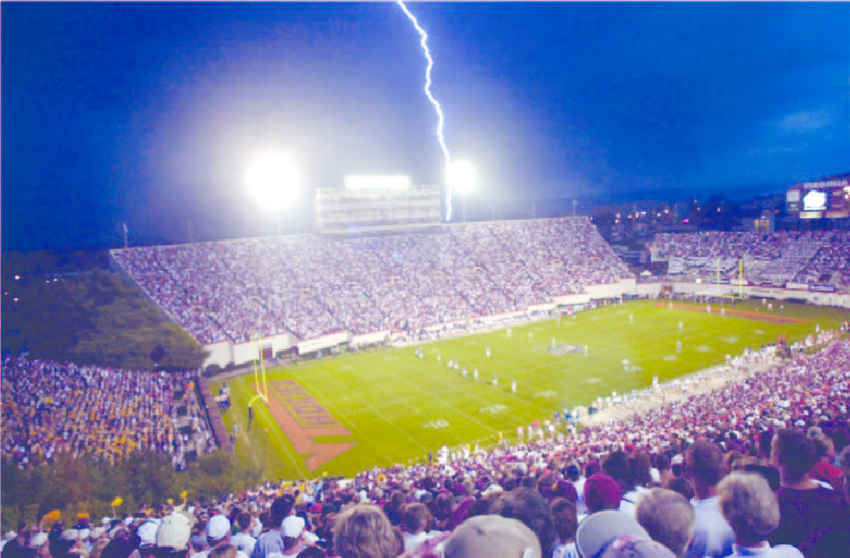Thunderstorm | Shelter (Building: 30/30 Rule)
The standards for delaying outdoor sports due to lightning are typically set by governing bodies such as sports leagues, associations, or organizations, as well as local weather authorities. These standards may vary depending on the specific sport, location, and level of play. However, some common guidelines for delaying outdoor sports due to lightning include:
- Lightning Detection Systems: Many sports facilities are equipped with lightning detection systems that can track lightning activity in the area. These systems use sensors to detect lightning strikes and provide real-time information on the proximity and severity of the lightning threat. When lightning is detected within a certain radius of the sports facility, it can trigger a delay or suspension of outdoor sports activities.
- Lightning Distance and Time Rules: A common rule of thumb used in outdoor sports is the “30-30” rule, which states that if the time between seeing lightning and hearing thunder is less than 30 seconds, outdoor activities should be suspended, and participants should seek shelter. The idea is that lightning can strike even when it is not raining, and thunder can indicate the proximity of lightning. Once the thunder is heard within 30 seconds of seeing lightning, the delay or suspension should be implemented.
- Local Weather Authority Guidelines: Local weather authorities, such as the National Weather Service in the United States, may issue severe weather warnings that include lightning information. Sports organizations may follow these guidelines and suspend outdoor sports activities when severe weather warnings, including lightning, are issued for the area.
- Sports-Specific Guidelines: Some sports may have specific guidelines for lightning delays or suspensions. For example, golf often follows a “Play Suspended” policy, where play is halted immediately when a siren or horn is sounded, and players are required to leave the course and seek shelter. Other sports may have specific rules regarding how long a delay should last, how players should be informed, and when play can resume.
It’s important to note that safety should always be the top priority when it comes to lightning and outdoor sports. Following established guidelines and seeking shelter when lightning is detected or severe weather warnings are issued can help protect participants from the dangers of lightning strikes.
There are various lightning detection and monitoring devices available on the market that can help you stay safe during thunderstorms. Some of these devices can track the distance of lightning strikes and alert you when lightning is detected within a certain radius of your location. Some devices can also provide real-time updates on lightning strikes in your area, allowing you to make informed decisions about when to seek shelter.
Examples of such devices include personal lightning detectors, lightning alert systems, and weather stations that have lightning detection capabilities. It is important to note that these devices should not be solely relied upon for lightning safety and should be used in conjunction with other safety measures, such as seeking shelter indoors and avoiding open areas during thunderstorms.









